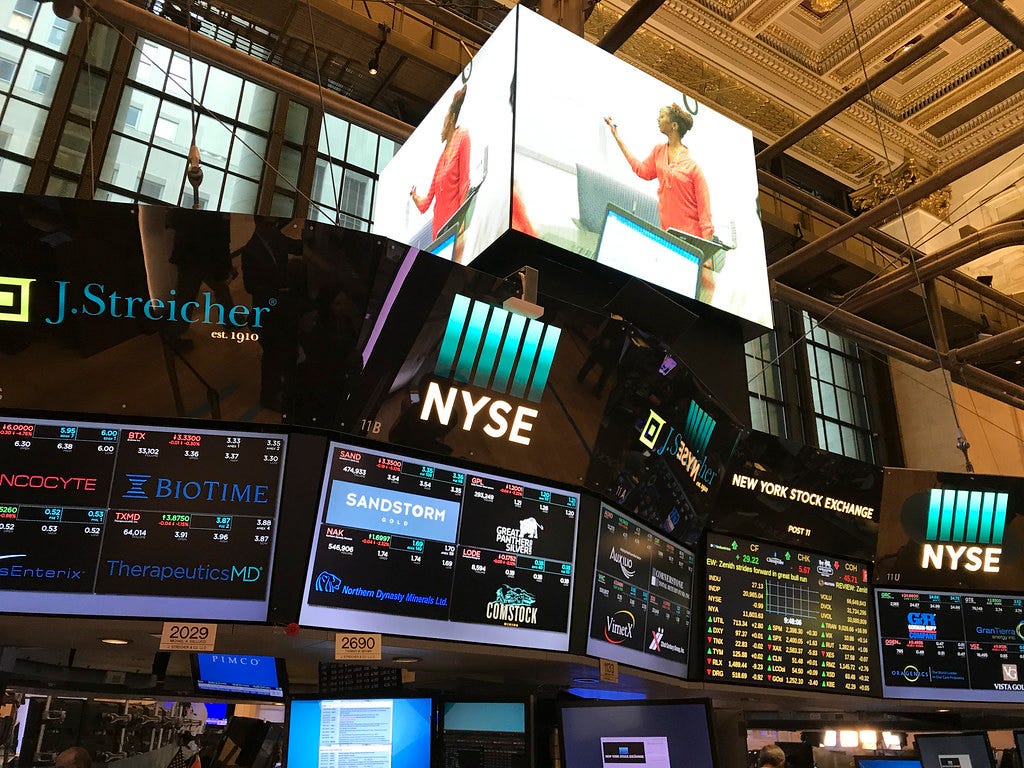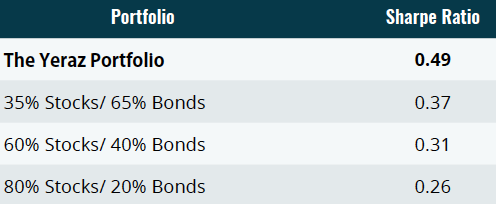No one knows what will happen next. You don’t. I don’t. No one does.
Because the unexpected finds a way of happening. Sometimes it’s little stuff, like a flat tire. Inconvenient, yes. But you change the flat, or call someone who can and get on with your life.
Other times its big stuff, like a killer virus that paralyzes the global economy, forces tens of millions of people out of work, and sends the stock market plummeting 32% in a month. That can be much harder to bounce back from. Especially if you were overloaded on stocks!
When it comes to managing your investments, you can pretend you’re the only person in the world with a magic crystal ball. Or, you can accept the uncertainty of life, and build an investment portfolio that can hold up against it.
A portfolio that will protect and grow your wealth during good times and bad... and let you sleep well at night, secure in the knowledge that no matter what happens in the markets, you’re going to be okay. A portfolio that you don’t have to micromanage on a daily, weekly, or even monthly basis... yet still gives you the money you need to care for yourself and your family—and the money you need to retire comfortably when you are ready. The Yeraz Fund is exactly that.
The Yeraz Portfolio Mechanics
The reality is we do not have perfect knowledge of what the best-performing asset class will be in the future. It might be gold. It might be bonds. It might be something else, like saffron. Like I said, no one knows what will happen next.
In the past, stocks have been the best-performing asset class. So the entire US population now believes in buying stocks for the long run. We have a cult of equity in this country, with very few dissenters. But what if stocks aren’t the best way to save for retirement going forward? There is no rule that says they have to be. If you don’t know which asset class will outperform the others, the solution is not to pick one and hope for the best. If you get it wrong, the consequences could be dire. The solution is to hold a little bit of all of them.
This is why the Yeraz Portfolio targets :
45% stocks
15% gold, metals, alternatives, options
20% real estate
15% cash
5% bonds
Following the Yeraz allocations does work.
Say you had $1,000 to invest way back in 1972.
So you put; $450 in stocks • $50 in bonds • $150 in cash • $150 in gold, and $200 in real estate. Meaning you followed the Yeraz allocations to a T.
Fast-forward to 2020, and your initial investment would have soared 4,168%. Awesome
Over the past 48 years, the Yeraz Portfolio returned an average of 8.4% annually. This is the highest average annual return of all the portfolios in the table above. And the best part is, you would have booked these higher returns with much less risk.
Ever heard of the Sharpe ratio? It’s a tool that analysts use to measure investment returns relative to risk. A higher Sharpe ratio points to a better risk-adjusted return. The Yeraz Portfolio has the highest Sharpe ratio (aka, the best risk-adjusted return) of all the portfolios we just covered. You can see this in the next table.
This doesn’t mean there won’t be hiccups. Look, any portfolio is going to have a few down years over a 48-year span. The question is: How bad will those years be, and how often will they happen? Well, the Yeraz Portfolio saw a positive return for 40 of the last 48 years. That’s an 83% hit rate.
In its worst year, it clocked a -9.2% return. And that happened in 2008, during the global financial crisis.
Remember, many people were totally wiped out in 2008. They lost their homes, their livelihoods, and most of their hard-earned savings. If the worst thing that happened to you in 2008 was a 9% drop in your portfolio, you would have been pretty damn happy. For perspective, the 80/20 portfolio—the one many finance guys call conservative—lost 26.6% in 2008.
The poor souls who were 100% in stocks lost 38.4%. That is something you never want to experience. I mean, it’s one thing if it happens when you’re my age, but what if it happens when you’re 65? You’re screwed. Fortunately, if you follow the Yeraz allocations, when the next crisis happens (and it will), the money that you worked so hard for and diligently squirreled away will be protected from the worst of it.
The next table shows how correlated each asset class in Yeraz is to the others. You can see that real estate and stocks have a somewhat strong correlation to one another (0.59). However, everything else either has a negative correlation or virtually no correlation. This means the portfolio is strongly diversified, which is a good thing.
Stocks—The Work Horse
Bonds—For Lower Volatility
Cash—For Flexibility
Gold & Options—The Anti-Investment
Real Estate—For More Diversification
The Yeraz Portfolio can be as simple or complicated as we want.
The simplest route is to hold four exchange-traded funds (ETFs), plus some cash:
45% stocks: Vanguard Total Stock Market ETF (VTI)
5% bonds: iShares Core US Aggregate Bond ETF (AGG)
15% cash
15% gold: SPDR Gold Shares Trust (GLD)
20% real estate: iShares US Real Estate ETF (IYR)
We can get a little more scientific with our picks which are a handful of small-cap stocks, large-cap stocks, growth or value stocks, or anything else.
The Yeraz Portfolio will help your money perform well in all environments. It will help it perform well in inflationary and deflationary environments. It will help it perform well in environments that are good for hard assets like gold, or good for financial assets like stocks and bonds.
You can think of it as the “Boy Scout Portfolio”—it’s prepared for anything.
Even the next Really Bad Thing.
Sure, there will be times when something in the Yeraz isn’t working as well as the other stuff. (GAMESTOP).
We may be tempted to sell. But we have to keep it, because someday it will be working, and something else won’t. Really, the only time we will need to sell is when we’re booking that retirement trip to Italy :)








